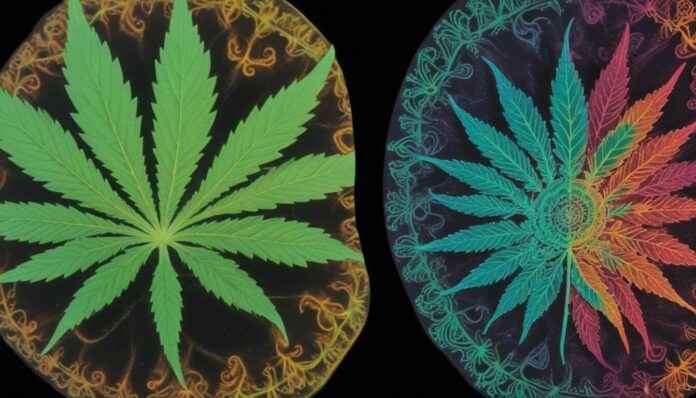The debate over whether cannabis is truly psychedelic has intrigued scientists for years. While both THC and classic psychedelics like LSD alter perception, their impacts on brain activity differ remarkably. This article delves into a study comparing oral THC, microdose LSD, and methamphetamine to uncover how they affect consciousness and neural complexity.
THC versus classic psychedelics: A technical distinction
Classic psychedelics such as LSD induce powerful perceptual changes through their action at the 5HT2a receptor, which receives signals from serotonin—one of the brain’s main chemical messengers. THC, on the other hand, interacts with endocannabinoids that regulate neuronal firing in a backward manner across synapses.
This fundamental difference underscores why drugs like LSD are typically labeled “psychedelic,” whereas THC’s classification remains debated despite producing altered states of consciousness. The term “psychedelic” originated in 1956 when psychiatrist Humphrey Osmond coined it to describe substances inducing profound mental effects.
Understanding neural complexity
A key characteristic of classic psychedelics is their ability to enhance neural complexity—an indicator of increased subjective experience richness. Researchers have noted that during psychedelic states, there’s an uptick in cerebral cortex electrical activity reflecting this complexity.
Conor Murray’s team at UCLA sought to determine whether oral THC could similarly boost neural complexity. Using electroencephalogram (EEG) technology, they examined participants who ingested synthetic THC contrasted with those who microdosed LSD.
Study insights: Comparing THC, LSD, and Methamphetamine
Participants took either synthetic THC (Marinol), a microdose of LSD, or methamphetamine. Notably, Marinol lacked other cannabis compounds like terpenes present in natural products, potentially altering its effects. Additionally, genetic factors impacting liver metabolism could intensify reactions to oral THC compared to inhaled forms.
Volunteers reported feeling significantly “high” from THC, rating their altered state between 6-7 on a 10-point scale. In contrast, both methamphetamine and microdose LSD produced milder responses. Heart rates surged, most notably among those administered THC.
Neural findings: Analyzing brain activity
The research focused heavily on measuring neural complexity. The EEG readings revealed surprising results. Only LSD led to statistically significant increases in neural complexity when compared to placebo. Despite some minor fluctuations in neural activity recorded, oral THC did not exhibit meaningful changes regarding brain complexity.
Integration and implications of findings
The unique outcomes illuminate stark contrasts between THC and classic psychedelics. While THC drastically shifts consciousness and mood, its impact on neural complexity doesn’t align with traditional psychedelics. This evidence may reshape our understanding of what qualifies as psychedelic, emphasizing pharmacological distinctions.
Broader perspectives on drug-induced states
This nuanced view highlights the diversity within psychoactive substances’ effects. Methamphetamine, typically associated with heightened alertness rather than perception changes, showcased minimal influence on complex brain activity in this controlled setting.
The variability in individual responses further accentuates the intricate interplay between genetics, dosage form, and substance composition. For instance, edibles comprising oils from whole cannabis plants might produce different results compared to pure synthetic THC pills.


